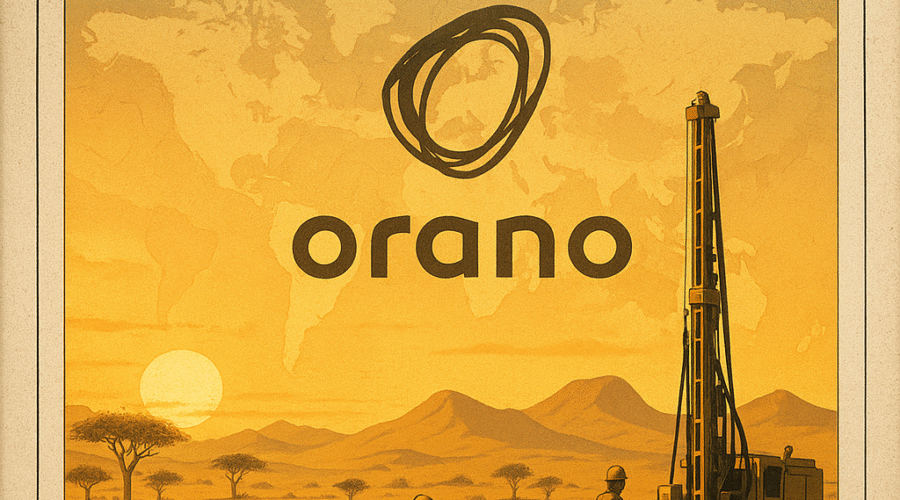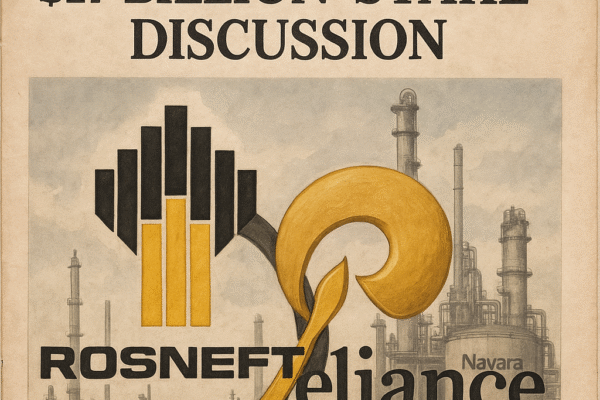French nuclear giant Orano’s potential divestment from Niger marks a pivotal shift in global uranium markets and European energy security. The state-owned company’s decision to explore asset sales follows two years of escalating tensions with Niger’s military junta, including mine seizures, permit revocations, and diplomatic breakdowns[1][3][15]. This move could transfer control of Africa’s second-largest uranium deposit to Russian or Chinese entities, fundamentally altering resource geopolitics in a region supplying 24% of EU uranium imports[16][17]. The situation underscores the collapse of France’s “Françafrique” influence strategy while creating new nuclear supply chain vulnerabilities for Western nations.
Strategic Importance of Niger’s Uranium Resources
Geological Profile and Production Capacity
Niger’s uranium reserves contain some of Africa’s highest-grade deposits, with the Imouraren site alone holding 179,000 tonnes of uranium – enough to power France’s nuclear fleet for 15 years at current consumption rates[5][15]. The SOMAÏR mine, until recently Orano’s operational crown jewel, produced 2,020 metric tons annually through open-pit operations yielding 0.3% U₃O₈ concentrations[8][17]. Comparatively, Canada’s Athabasca Basin mines average 15-20% grades, making Niger’s deposits less economical but strategically irreplaceable due to existing infrastructure[17].
Niger’s Uranium Production vs Global Peers (2024)
| Country | Production (tU) | % Global Supply |
|---|---|---|
| Kazakhstan | 21,529 | 43% |
| Canada | 7,351 | 15% |
| Niger | 2,020 | 4.7% |
Source: World Nuclear Association 2024 Report[17]
European Energy Dependencies
Euratom data reveals Niger supplied 24.3% of EU uranium imports in 2021, critical for 126 reactors generating 25% of bloc electricity[16]. France’s 56-reactor fleet particularly relies on Niger for 15-17% of annual uranium needs – equivalent to 900-1,000 tU supporting 40 TWh generation[13][16]. This interdependence developed through colonial-era agreements granting France preferential mining access, now unraveling under junta resource nationalism[3][12].
Chronology of Orano-Niger Relations Deterioration
Post-Coup Escalation (2023-2024)
The July 2023 coup that installed General Abdourahamane Tiani triggered immediate resource policy shifts. By December 2023, junta forces seized operational control of SOMAÏR, freezing Orano’s 63.4% stake and halting uranium exports[14][18]. The crisis deepened in June 2024 when Niger revoked Orano’s Imouraren permit days after the company proposed in-situ leach development plans[7][15].
Key Events Timeline
| Date | Event | Impact |
|---|---|---|
| Jul 2023 | Military coup ousts Bazoum | Policy shift toward resource nationalism[12] |
| Dec 2023 | Junta seizes SOMAÏR control | Orano loses 63.4% stake in flagship mine[14] |
| Jun 2024 | Imouraren permit revoked | $2.1B project suspended[15] |
| May 2025 | Orano files ICSID arbitration | Legal claims exceed €1.4B[11] |
Operational and Financial Impacts
Orano’s Niger operations generated €420M annual revenue pre-coup, contributing 18% to corporate EBITDA[6][10]. The asset freeze created €230M in stranded costs through Q1 2025, compounded by €85M in unpaid JV receivables[3][9]. With SOMAÏR’s production costs rising to $65/lb versus spot prices of $92/lb, the junta’s export ban rendered operations economically unviable[10][17].
Geopolitical Ramifications of Asset Transfer
Russian and Chinese Interest
Rosatom has conducted due diligence on Orano’s assets since June 2024, seeking to control 15,000 tU annual capacity through SOMAÏR and Imouraren[13][18]. Parallel interest comes from China National Nuclear Corporation (CNNC), which already co-owns the SOMINA mine through a 37.5% stake[13]. Analysts estimate acquisition costs between $700M-$1.1B, considering junta demands for 30% carried interest in any new venture[10][13].
Potential Buyers Comparative Analysis
| Entity | Offer Details | Strategic Motivation |
|---|---|---|
| Rosatom | $850M + 30% state equity | Expand African uranium footprint to 25% global supply[13] |
| CNNC | $720M all-cash | Secure feedstock for 150 planned reactors by 2035[13] |
| Curzon Uranium | $600M + ME partner | Create vertical integration with UAE nuclear program[10] |
Western Energy Security Implications
A Russian takeover would immediately threaten 12% of France’s nuclear fuel supply, potentially requiring €300M annually in alternative sourcing from Canada’s Cameco or Kazatomprom[10][17]. EU contingency plans estimate 3-5 year timelines to replace Niger-sourced uranium through expanded production in Sweden (Aura Energy) and Namibia (Paladin Energy)[17].
Legal and Operational Complexities
ICSID Arbitration Proceedings
Orano’s March 2025 ICSID filing cites violations of the France-Niger Bilateral Investment Treaty, seeking €1.2B in damages for expropriated assets[11]. The case hinges on whether junta actions constitute lawful resource nationalism under the 2014 Mining Code revisions, which mandate 10% state equity in all projects[9][15]. Precedents from Tanzania’s Barrick Gold case suggest Orano could recover 40-60% of claimed damages after 3-5 year litigation[11].
Workforce and Community Impacts
The Arlit mining community faces 35% unemployment since SOMAÏR’s closure, exacerbating migration pressures toward Libya and Europe[8][14]. Orano’s departure would eliminate 2,300 direct jobs and 8,700 indirect positions in a region already struggling with Saharan insurgent groups[3][9]. Junta proposals to replace foreign staff with Russian technicians have sparked union protests over wage cuts up to 60%[10][13].
Future Outlook and Market Dynamics
Uranium Price Volatility
The Niger crisis has contributed to 22% uranium price volatility since Q4 2024, with spot prices oscillating between $85-$105/lb[10][17]. Long-term contract prices now include 15-20% geopolitical risk premiums for African-sourced uranium, compared to 5-8% for Canadian or Australian supply[17]. Analysts project sustained $90+ pricing through 2026 as utilities seek ex-Africa diversification[17].
Sources
https://africa.businessinsider.com/local/markets/french-nuclear-company-considers-niger-asset-sale-after-ties-with-junta-turn-sour/8yqtt4r, https://energynews.oedigital.com/mining/2025/05/17/frances-orano-is-exploring-the-sale-of-niger-uranium-reports-ft, https://caliber.az/en/post/french-nuclear-fuel-company-explores-sale-of-niger-mines, https://www.globalbankingandfinance.com/US-ORANO-NIGER-5073d783-ef77-4bbf-a9d7-6f25ed603e19, https://www.neimagazine.com/news/uranium-tensions-subside-in-niger/, https://www.orano.group/usa/en/about-us, https://www.world-nuclear-news.org/Articles/Preparatory-activities-begin-at-Imouraren, https://en.wikipedia.org/wiki/COMINAK, https://www.miningmx.com/trending/61122-orano-files-lawsuit-over-niger-staff-detention-asset-seizures/, https://www.mining-technology.com/news/orano-uranium-assets-niger/, https://www.africanlawbusiness.com/news/orano-files-for-arbitration-against-niger/, https://factcheck.afp.com/doc.afp.com.33T46HM, https://www.ecofinagency.com/mining/0406-45584-uranium-russia-s-rosatom-eyes-france-s-orano-s-assets-in-niger, https://www.orano.group/en/news/news-group/2024/december/orano-confirms-the-loss-of-operational-control-of-somair-in-niger, https://www.world-nuclear-news.org/articles/niger-revokes-mining-permit-for-imouraren-project, https://world-nuclear-news.org/Articles/A-guide-Uranium-in-Niger, https://investingnews.com/daily/resource-investing/energy-investing/uranium-investing/uranium-producing-countries/, https://www.mining.com/web/orano-explores-sale-of-niger-uranium-assets-ft-reports/





